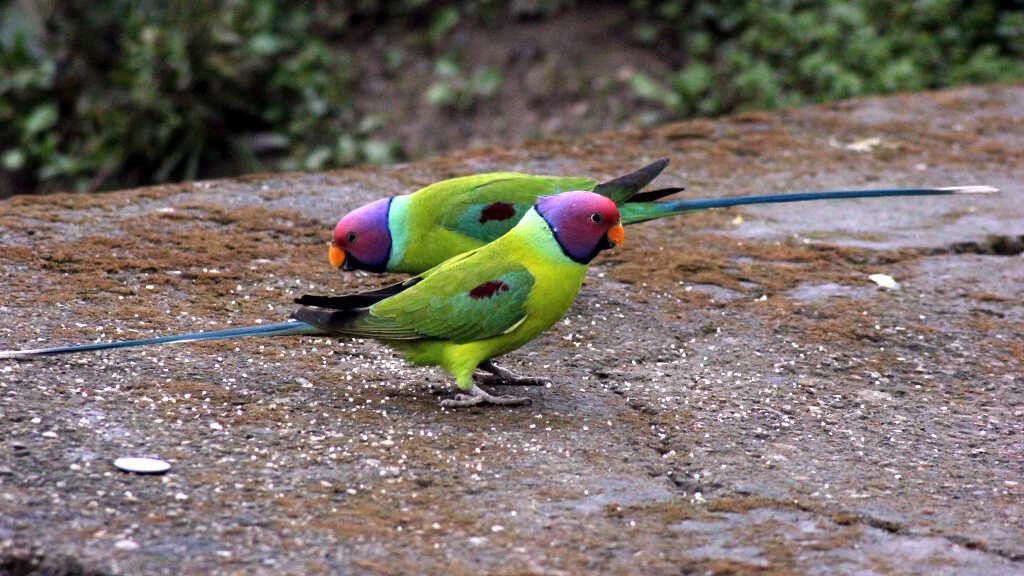
Pisttacula cyanocephala (Plum headed parakeet)
Psittacula cyanocephala, commonly known as the Plum-headed Parakeet, is a vividly colored parrot species found in the lower elevation forests of the Great Himalayan National Park (GHNP). Its distinctive plum-colored head, green body, and long, tapering tail make it easy to identify in the field. This species adds to the diversity of GHNP’s birdlife and is often spotted in mixed flocks or flying swiftly between trees.
This parakeet is one of the more vocal residents of the park, with a shrill, high-pitched call that echoes through forest canopies, especially during the early morning and evening hours.
Its presence in GHNP is a positive indicator of healthy, functioning ecosystems in the park’s subtropical forest zones.
| Common name | Plum –headed Parakeet |
| Scientific name | Pisttacula cyanocephala |
| Family | Psittacidae |
| Description | Distinguished from Rose –ringed Parakeet by smaller size, bluish red head and maroon shoulder-patches. In female, head greyer with a bright yellow collar round neck, and no maroon shoulder-patches. White tips to the two long central tail feathers diagnostic in flight, as also the sharp, interrogative tooi? Uttered on the wings. Flocks in wooded country, about forest cultivation.Throughout the Indian Union from about 2000 m in the Himalayas; Resident and locally migratory. |
Habitat and Distribution in GHNP
In GHNP, Plum-headed Parakeets are commonly observed in subtropical broadleaf forests, open wooded areas, and edges of cultivated zones within the park’s buffer regions. They typically inhabit elevations up to 1,800 meters and are more frequently seen in undisturbed forest patches with mature fruiting trees.
They may also be spotted along trail corridors and forest margins near traditional villages during the fruiting season, where food is abundant.
Diet and Behavior
Psittacula cyanocephala feeds on fruits, seeds, flowers, and nectar, often seen foraging in the canopy. Their role as seed dispersers contributes to the regeneration and health of GHNP’s forest ecosystems. They are highly social, often seen in small groups, and display strong pair bonds during the breeding season.
Their flight is rapid and direct, with sweeping movements across forest clearings. These parakeets prefer nesting in tree hollows, which makes old-growth forests vital to their survival.
Conservation Status
Although not listed as endangered, Psittacula cyanocephala faces threats from habitat loss and illegal bird trade in other parts of its range. The strict protections in place within GHNP provide a safe refuge for this species. Continued preservation of mature forest stands and monitoring of bird populations are essential for maintaining its numbers.



